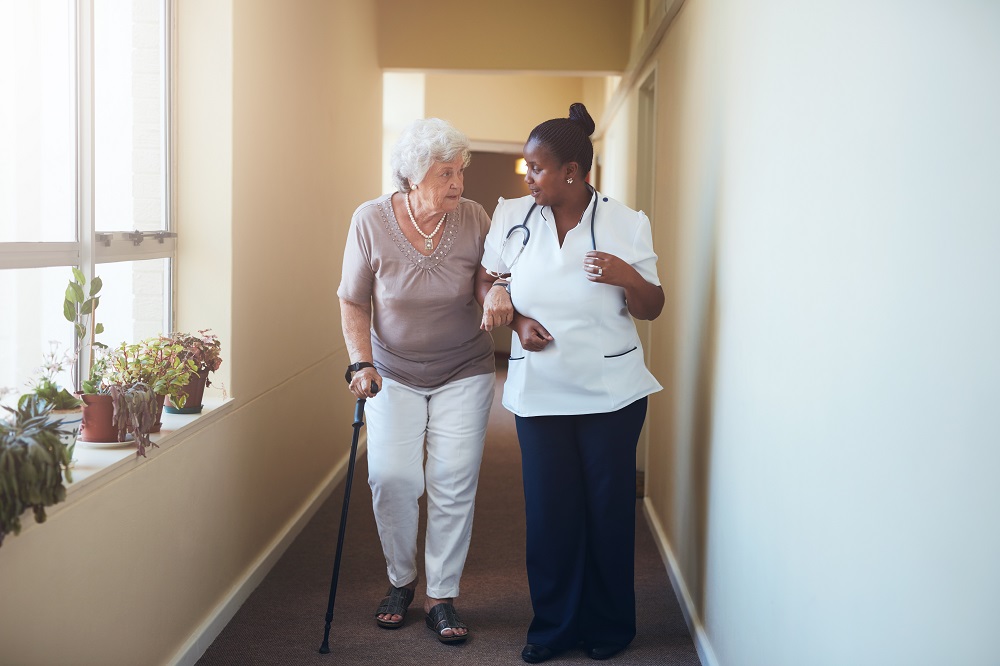By Nora OBrien-Suric, PhD
President, the Health Foundation for Western and Central New York
Governor Andrew Cuomo has released his proposed 2020-21 budget, and it included some potentially concerning changes to the state’s Medicaid program. While we understand the governor must contend with a growing state deficit, our team at the Health Foundation for Western and Central New York has strong reservations about proposed changes to Medicaid that would require counties to cover more costs of the program. While details on the budget are still forthcoming, we anticipate the proposed changes would have a negative impact on many people throughout the state.
Approximately one-third of New Yorkers rely on Medicaid for health coverage. This includes low-income families, older adults, people with disabilities, pregnant women and children. For many people, Medicaid is a life-saving option that allows them to access vital health services like preventative check-ups, prenatal care, immunizations, emergency treatment and medical equipment such as wheelchairs.
A robust Medicaid program is essential to ensuring people in our community have access to the care they need. In fact, New York’s admirable rate of health coverage overall—approximately 95 percent of residents have some kind of coverage—can be partly attributed to our comprehensive existing Medicaid program.
What’s behind the proposed changes? In 2013, in response to rising costs, Gov. Cuomo froze the amount that local governments would have to cover for Medicaid, shifting more of the responsibility to the state. Even with those changes, counties were still required to make significant contributions toward Medicaid. New York is one of only a few states in the U.S. that require Medicaid costs to be shared at the local level.
The governor has now proposed unfreezing that rate and requiring that counties pay a higher Medicaid share if their spending rises locally by more than three percent in a year. Conversely, counties will see savings if their costs rise less than three percent from the previous year—quite a challenge when you consider rising health care costs and an aging population. As of 2019, more than 3.2 million people in New York State were 65 years old or older, and that population, and associated health and long term care costs, will continue to grow.
Counties have little control, if any, over Medicaid costs—eligibility and prices are determined at the state and federal level. The counties with the highest rates of poverty, and therefore highest Medicaid rates, could end up facing a significant cost under this plan.
That means the communities that are already the most at risk would be facing even greater strain to meet the needs of their residents—places like Allegany or Oswego counties, where the poverty rate is about 16 percent, notably higher than the state or national average.
Putting counties in this challenging financial position will likely discourage them from attempting to reach an important demographic: residents who are eligible for Medicaid coverage but not currently enrolled. An average of 25 percent of uninsured people in the 16 counties we serve fall into this category, and reaching these individuals is key to closing the gap in coverage in our state.
The Citizens Budget Commission, a nonpartisan civic organization whose mission is to achieve constructive change in finances and services in New York State, has long advocated for New York to move away from the local contribution for Medicaid. CBC explains how this system is regressive and reinforces inequity in their most recent report on the topic, “Still a Poor Way to Pay for Medicaid” (2018).
There are no simple answers to this challenge, but we encourage our legislators to carefully consider other means of rectifying these issues that will not result in poorer health for the community.
Instead, we encourage Gov. Cuomo to end this cycle and work toward ensuring all New Yorkers have the care and coverage they need. Making sure all residents have access to affordable, comprehensive health care is the straightest path to a healthier, stronger, thriving community.



